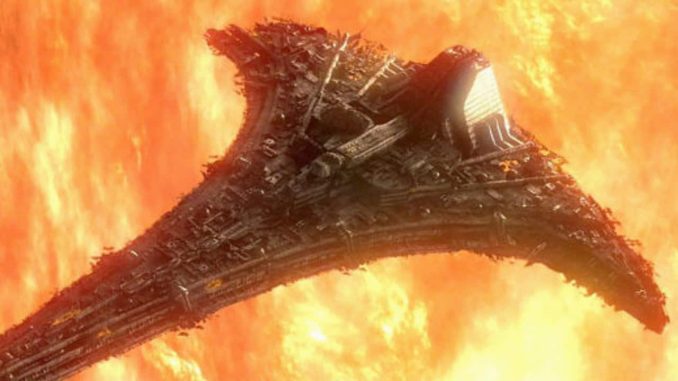
By Jonathan Klotz
| Published
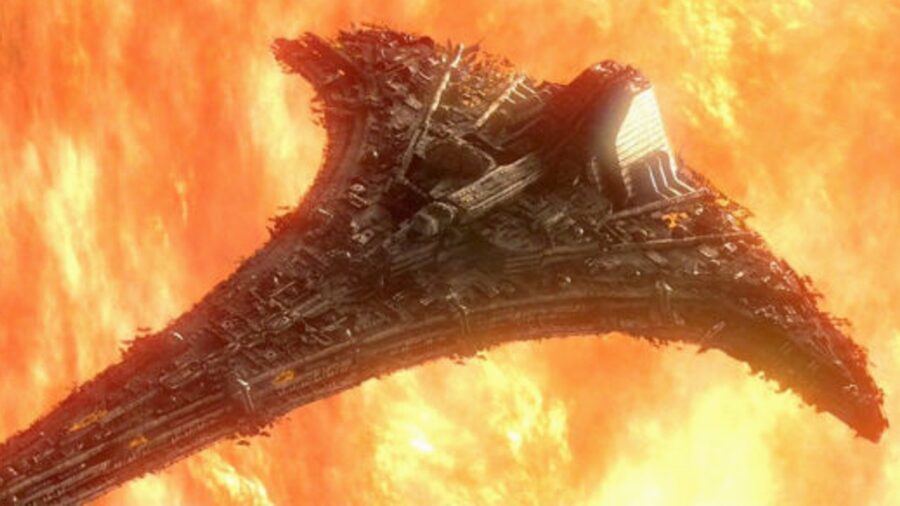
There’s an old Hollywood saying that you shouldn’t work with children or animals that should be amended to also include “don’t introduce time travel into a series unless you absolutely have to.” Time travel has to be handled very carefully to keep plot holes to a minimum and, even worse, so that it doesn’t undercut the stakes of the story. In “Twin Destinies,” Stargate Universe demonstrates what not to do and, in the process, comes across as a cheap imitation of the fan-favorite Star Trek: The Next Generation episode “Yesterday’s Enterprise,” which does time travel right.
Twin Destinies Derails An Otherwise Good Season
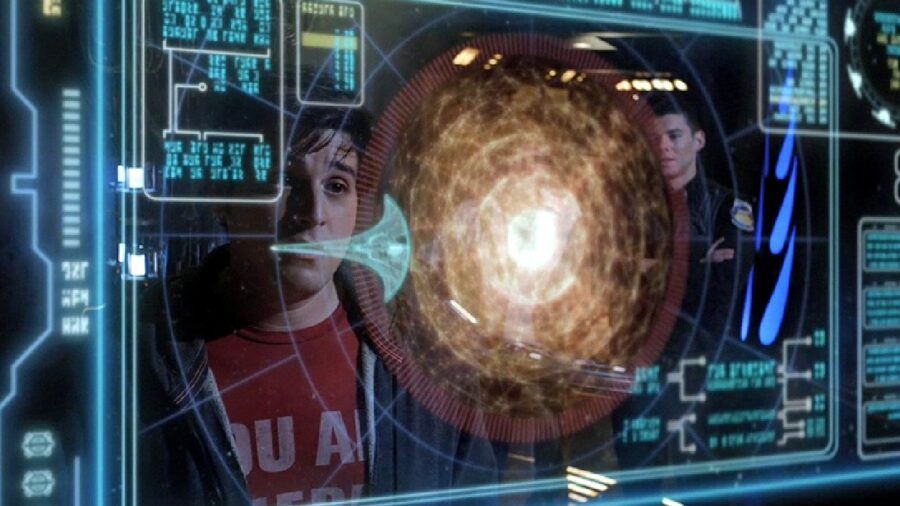
“Twin Destinies” is part of the back half of Season 2, when Stargate Universe was finally starting to find its groove, but by then, it was too late to save the series, and the confusing episode is a great example of why the series kept taking two steps forward and one step back. The episode starts out with the crew arguing over whether they should attempt to dial back to Earth from within a star, an incredibly dangerous maneuver that Dr. Nicholas Rush insists could rupture a hole in the space-time continuum. It’s a standard argument between Rush, Colonel Telford, Lieutenant Scott, and Eli Wallace that, as usual, Rush loses, the plan is put into action, and as with “Yesterday’s Enterprise,” a different version of the Destiny dropping into space complicates the mission.
Instead of the emotional return of a dead character, “Twin Destinies” forces the crew to contend with a version of Rush from 12 hours in the future. Future Rush reaches out from an exact duplicate of the Destiny shuttle to warn the crew not to make the jump. It’s here that the Stargate Universe episode wears its inspiration on its sleeve, as just like “Yesterday’s Enterprise,” there’s a doomed version of their ship trapped in space, a desperate need for repairs, and a moment of sacrifice, but instead of being an episode of emotional catharsis “Twin Destinies” is so confusing, fans are still debating its ending today.
A Plot Hole You Can Drive An Asuran City-Ship Through
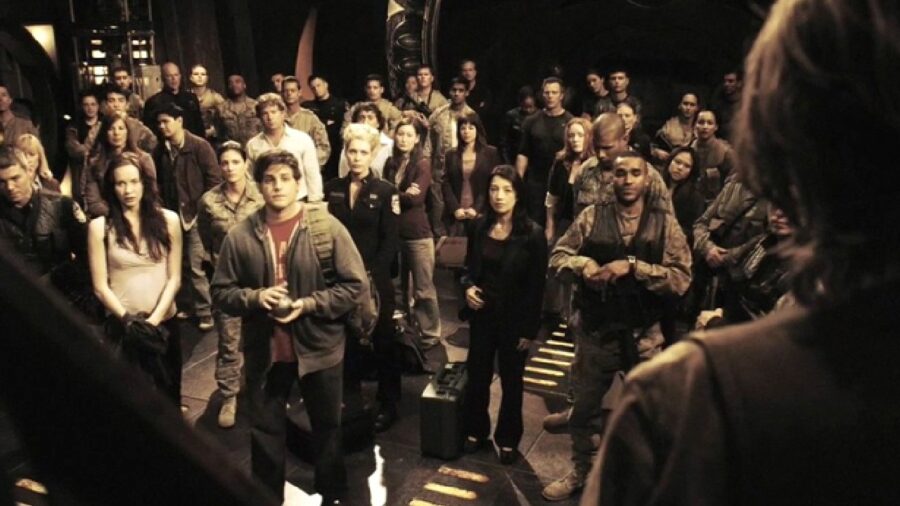
The problem comes up when the crew of the Present Destiny salvage needed parts from the Future Destiny, leading to Present Telford being alone with Future Rush next to a damaged but still powered weapons array, which might as well have a sign hanging from it saying “someone’s going to get hurt.” Present Telford does what he always does, which is accuses Future Rush of sabotaging the system and killing everyone on board the Future Destiny, which, of course, Future Rush denies, and in the scuffle, ends up killing Present Telford. Needless to say, this lacks the pathos of “Yesterday’s Enterprise” when the Enterprise-D is holding multiple Klingon Birds of Prey at bay so the displaced Enterprise-C can go back in time to meet its untimely fate.
Now, the death of a main character should be a huge deal, and it could have been a turning point for Stargate Universe, but at the start of the very next episode, “Alliances,” it’s revealed that the Future Telford survived, is back on Earth, and is very quick to accept the story of Present Telford’s death in an accident. It’s never explained how Telford was the only survivor of the journey, and it’s also never explained what Future Rush did after being hooked up to the interface chair as Future Destiny was destroyed by the gravity of the star. “Yesterday’s Enterprise” makes it clear that the timeline of the Enterprise-D has been restored and the Federation is no longer at war with the Klingons, but to this day, fans are still discussing if Future Rush uploaded himself into the Present Destiny or did he go down with the ship.
The Perils Of Including Time Travel
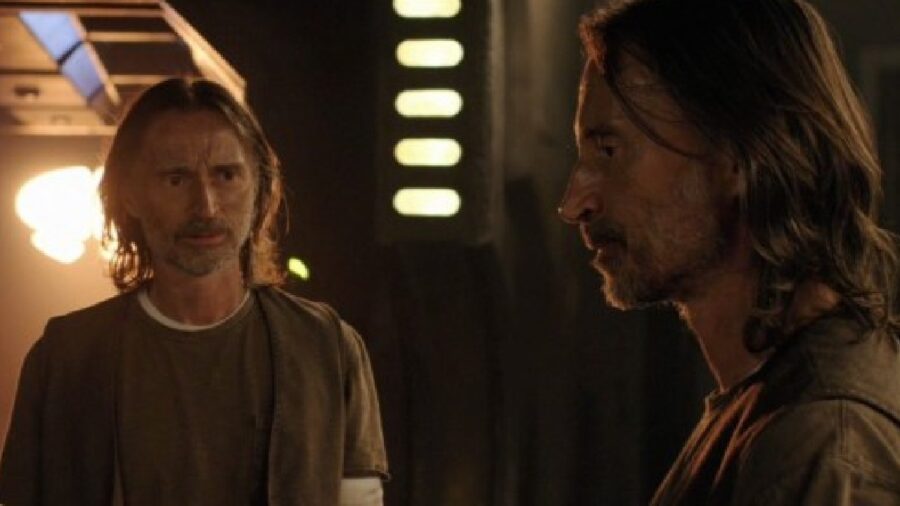
“Twin Destinies” failing to land with fans is a bit of a surprise as it was written by Brad Wright, the co-creator of the Stargate television shows, and later, the creator of Travelers, a sci-fi time-travel series that does everything right and manages to push against audience expectations in interesting ways. Stargate Universe attempted the same thing by focusing more on sci-fi drama instead of sci-fi adventure, but it kept going back to the well of no one trusting Rush too many times. If, instead, the series had leaned more into the ethical philosophy found throughout Star Trek: The Next Generation’s best episodes, which includes “Yesterday’s Enterprise,” then the crew’s constant arguing could have been more grounded, less emotional, and in turn, less repetitive and frustrating.
As it stands, “Twin Destinies” is an awkward time-travel bottle episode that only serves to muddy the waters of the series going forward. Stargate Universe didn’t have much time left itself, ending after only eight more episodes, though thankfully, the cast and crew were able to reach a point that felt like a natural conclusion. “Yesterday’s Enterprise” is a superior version of the lost in time story that most sci-fi franchises end up dabbling in at least once during their runs, but to Brad Wright’s credit, it’s a tough concept to nail down, which is why it’s always better to leave time travel out of a franchise.

Leave a Reply